Garden of Earthly Delights,
outer wings of the triptych
These are exterior panels that show the world during creation, probably on the Third Day, after the addition of plant life but before the appearance of animals and humans. These panels lack colour, probably because most Netherlandish triptych were thus painted, but possibly indicating that the painting reflects a time before the creation of the sun and moon, which were formed, according to Christian theology, to "give light to the earth". God, wearing a crown similar to a papal tiara is visible as a tiny figure at the upper left according to the art historian Hans Belting, "as though the world he had created was already slipping beyond his control".
Above God is inscribed a quote from Psalm 33 reading "Ipse dixit, et facta sunt: ipse mandávit, et creáta sunt"—For he spake and it was done; he commanded, and it stood fast. The Earth is encapsulated in a transparent sphere recalling the traditional depiction of the created world as a crystal sphere held by God or Christ. Refracting light, it hangs suspended in the cosmos, which is shown as an impermeable darkness, whose only other inhabitant is God himself.
The Garden of Earthly Delights is the modern title the original is lost, it is listed in Phillip IV of Spain's inventory as La Pintura del Madrono. The dating of the painting is uncertain, however art historians placed the work in 1503-1504 or even later. In no other painting does he achieve such complexity of meaning or such vivid imagery. The triptych is painted in oil on oak and is formed from a square middle panel flanked by two other oak rectangular wings that close over the center as shutters
The three scenes of the inner triptych are probably (but not necessarily) intended to be read chronologically from left to right. The left panel depicts God presenting Eve to Adam, the central panel is a broad panorama of sexually engaged nude figures, fantastical animals, oversized fruit and hybrid stone formations. The right panel is a hellscape and portrays the torments of damnation.
The left panel sometimes known as the Joining of Adam and Eve. Depicts a scene from the paradise of the Garden of Eden commonly interpreted as the moment when God presents Eve to Adam. The painting shows Adam waking from a deep sleep to find God holding Eve by her wrist and giving the sign of his blessing to their union. Some of the image's details seem to contradict the innocence that might be expected in the Garden of Eden before the expulsion. Tuttle and other critics have interpreted the gaze of Adam upon his wife as lustful, and indicative of the Christian belief that man was doomed from the beginning.
The center image depicts the expansive "garden" landscape which gives the triptych its name. The panel shares a common horizon with the left wing, suggesting a temporal and spatial connection between the two scenes. The garden is teeming with male and female nudes, together with a variety of animals, plants and fruit.
The figures are engaged in diverse amorous sports and activities, both in couples and in groups. Gibson describes them as behaving "overtly and without shame" while art historian Laurinda Dixon writes that the human figures exhibit "a certain adolescent sexual curiosity". Visible through its circular window is a man fondling his partner's genitals. The center frame could be considered either as an allegory of transience or a playground of corruption.
The impression of a life lived without consequence, is underscored by the absence of children and old people. According to the second and third chapters of Genesis, Adam and Eve's children were born after they were expelled from Eden. This has led some commentators, to theorise that the panel represents the world if the two had not been driven out.
The right panel illustrates Hell.
The tone of this final panel strikes a harsh contrast to those preceding it. In a single, densely detailed scene, the viewer is made witness to cities on fire in the background; war, torture chambers, infernal taverns, and demons in the midground; and mutated animals feeding on human flesh in the foreground.
Large explosions in the background throw light through the city gate and spill forth onto the water in the midground, their fiery reflection turning the water below into blood. The light illuminates a road filled with fleeing figures, while hordes of tormentors prepare to burn a neighbouring village.
A short distance away, a rabbit carries an impaled and bleeding corpse, while a group of victims above are thrown into a burning lantern. Some are shown vomiting or excreting, others are crucified by harp and lute, in a hallucinatory depiction of the consequences of sin.
The focal point of the scene is the "Tree-Man", whose cavernous torso is supported by what could be contorted arms or rotting tree trunks. The tree-man's torso is formed from a broken eggshell, and the supporting trunk has thorn-like branches which pierce the fragile body.
Bosch describes hell not as a fantastical space, but as a realistic world containing many elements from day-to-day human life. Animals are shown punishing humans, subjecting them to nightmarish torments that may symbolise the seven deadly sins, matching the torment to the sin.
Hieronymus Bosch, in a c. 1550 copy of a drawing thought to be a self-portrait. His age in this representation (believed to be around 60 years) has been used to estimate his date of birth, although its attribution remains uncertain.
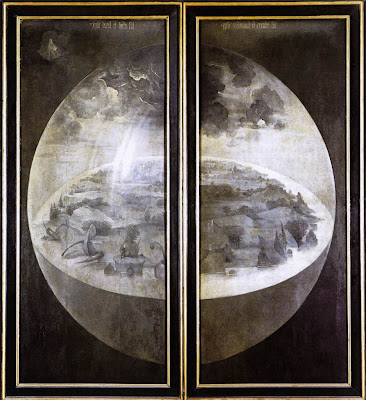_-_WGA2506.jpg)
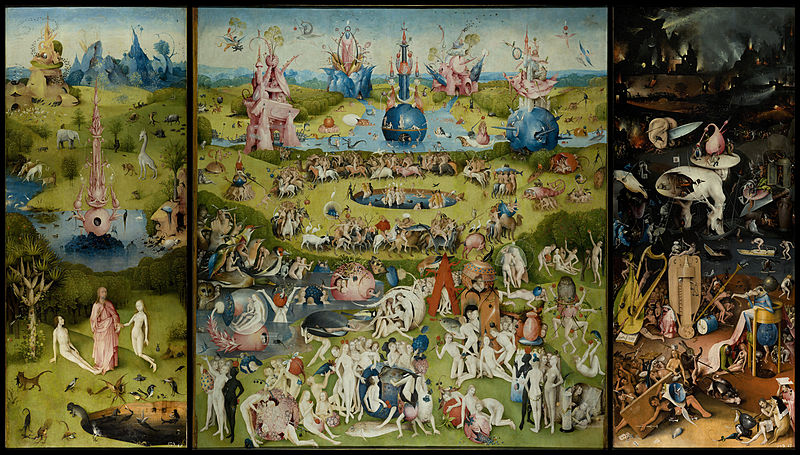
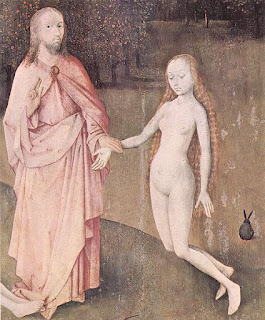
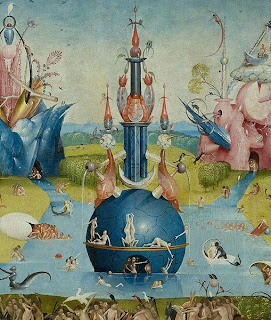
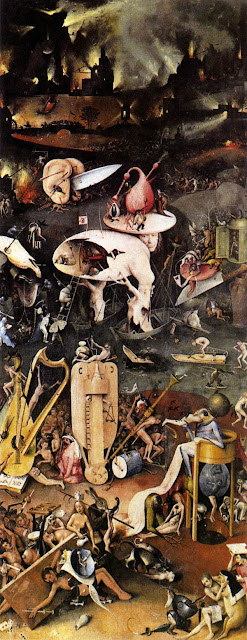.jpg)

Sem comentários:
Enviar um comentário